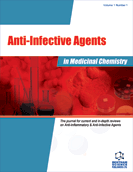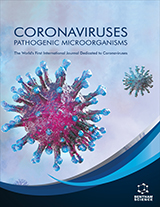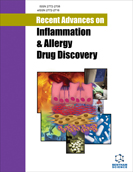Abstract
Multi-antibiotic resistant Gram-positive cocci, which include Staphylococcus aureus, the coagulase-negative staphylococcal group, Enterococcus faecalis and Enterococcus faecium, and other streptococci, represent emerging pathogens especially in the setting of the immunocompromised, hospitalized patients, in particular when surgery, invasive procedures, or prosthetic implants are of concern, patients are admitted in intensive care units, or underlying chronic disorders and immunodeficiency are to be considered, and broad-spectrum antibiotics or immunosuppressive drugs are needed for prolonged administration. During the recent years, the phenomenon of multi-resistant Gram-positive cocci is spreading from the Hospital into the community, where the retrieval of such microorganism is progressively increasing. The spectrum of available antimicrobial compounds for an effective management of these relevant infections is significantly impaired in selection and clinical efficacy by the emerging and spread of methicillin-resistant and more recently glycopeptide-resistant Gram-positive microbial strains. The first oxazolidinone derivative linezolid, together with the recently licensed quinupristin-dalfopristin, daptomycin and tigecycline, followed by a number of glycopeptides, fluoroquinolones, and other experimental compounds on the pipeline or approaching the market in the year 2006, represent an effective response to the great majority of these concerns. Because of their innovative mechanisms of action, their maintained or enhanced activity against multiresistant pathogens, their effective pharmacokinetic-pharmacodynamic properties, their frequent possibility of synergistic activity with other compounds effective against Gram-positive pathogens, and a diffuse potential for a safe and easy administration, also when compromised patients are of concern. The main problems related to the epidemiological and clinical features of multiresistant Gram-positive infection, the potential clinical indications of all recently available compounds compared with the standard of care of treatment of resistant Gram-positive infections, and updated data on efficacy and tolerability of linezolid as the golden standard compound for vancomycinresistant Gram-positive cocci in multiple clinical situations, are outlined and updated on the ground of an extensive review of all the available. Recent evidences are commented from the international literature.
Keywords: Linezolid, oxazolidinones, resistant gram-positive organisms, staphylococci, enterococci
Anti-Infective Agents in Medicinal Chemistry
Title: The First Years of Linezolid Experience in Clinical Practice: A Balance and Future Implications
Volume: 6 Issue: 1
Author(s): Roberto Manfredi and Leonardo Calza
Affiliation:
Keywords: Linezolid, oxazolidinones, resistant gram-positive organisms, staphylococci, enterococci
Abstract: Multi-antibiotic resistant Gram-positive cocci, which include Staphylococcus aureus, the coagulase-negative staphylococcal group, Enterococcus faecalis and Enterococcus faecium, and other streptococci, represent emerging pathogens especially in the setting of the immunocompromised, hospitalized patients, in particular when surgery, invasive procedures, or prosthetic implants are of concern, patients are admitted in intensive care units, or underlying chronic disorders and immunodeficiency are to be considered, and broad-spectrum antibiotics or immunosuppressive drugs are needed for prolonged administration. During the recent years, the phenomenon of multi-resistant Gram-positive cocci is spreading from the Hospital into the community, where the retrieval of such microorganism is progressively increasing. The spectrum of available antimicrobial compounds for an effective management of these relevant infections is significantly impaired in selection and clinical efficacy by the emerging and spread of methicillin-resistant and more recently glycopeptide-resistant Gram-positive microbial strains. The first oxazolidinone derivative linezolid, together with the recently licensed quinupristin-dalfopristin, daptomycin and tigecycline, followed by a number of glycopeptides, fluoroquinolones, and other experimental compounds on the pipeline or approaching the market in the year 2006, represent an effective response to the great majority of these concerns. Because of their innovative mechanisms of action, their maintained or enhanced activity against multiresistant pathogens, their effective pharmacokinetic-pharmacodynamic properties, their frequent possibility of synergistic activity with other compounds effective against Gram-positive pathogens, and a diffuse potential for a safe and easy administration, also when compromised patients are of concern. The main problems related to the epidemiological and clinical features of multiresistant Gram-positive infection, the potential clinical indications of all recently available compounds compared with the standard of care of treatment of resistant Gram-positive infections, and updated data on efficacy and tolerability of linezolid as the golden standard compound for vancomycinresistant Gram-positive cocci in multiple clinical situations, are outlined and updated on the ground of an extensive review of all the available. Recent evidences are commented from the international literature.
Export Options
About this article
Cite this article as:
Manfredi Roberto and Calza Leonardo, The First Years of Linezolid Experience in Clinical Practice: A Balance and Future Implications, Anti-Infective Agents in Medicinal Chemistry 2007; 6 (1) . https://dx.doi.org/10.2174/187152107779314098
| DOI https://dx.doi.org/10.2174/187152107779314098 |
Print ISSN 1871-5214 |
| Publisher Name Bentham Science Publisher |
Online ISSN 1875-6018 |
 13
13Related Articles
-
Prokaryotic Substrate-Binding Proteins as Targets for Antimicrobial Therapies
Current Drug Targets The Human Microbiome Project, Personalized Medicine and the Birth of Pharmacomicrobiomics
Current Pharmacogenomics and Personalized Medicine Potential Therapeutic Application of Chondroitin Sulfate/Dermatan Sulfate
Current Drug Discovery Technologies Novel Therapeutic Agents for Resistant Gram-Positive Infections
Current Drug Therapy Small Molecule Inhibitors Limit Endothelial Cell Invasion by Staphylococcus aureus
Current Pharmaceutical Biotechnology Use of Nanoparticles as Therapy for Methicillin-Resistant Staphylococcus aureus Infections
Current Drug Metabolism Ophthalmological and Otological Manifestations in the Antiphospholipid Syndrome
Current Rheumatology Reviews Recent Advances in Natural Product-Based Anti-Biofilm Approaches to Control Infections
Mini-Reviews in Medicinal Chemistry Activation of Macrophages: Establishing a Role for Polysaccharides in Drug Delivery Strategies Envisaging Antibacterial Therapy
Current Pharmaceutical Design Inpatient Care of the HIV Infected Patient in the Highly Active Antiretroviral Therapy (HAART) Era
Current HIV Research Hybrid Drugs as Potential Combatants Against Drug-Resistant Microbes: A Review
Current Topics in Medicinal Chemistry Combined Brain/Heart Magnetic Resonance Imaging in Systemic Lupus Erythematosus
Current Cardiology Reviews The Role of 18FDG PET/CT in the Assessment of Endocarditis, Myocarditis and Pericarditis
Current Radiopharmaceuticals Evaluation of <sup>99m</sup>Technetium-Vancomycin Imaging Potential in Experimental Rat Model for the Diagnosis of Infective Endocarditis
Current Medical Imaging Targeting RGD Recognizing Integrins: Drug Development, Biomaterial Research, Tumor Imaging and Targeting
Current Pharmaceutical Design Oral Factor Xa (FXa) Inhibitors for Treatment of Heparin-induced Thrombocytopenia (HIT)
Current Drug Therapy Recent Tools to Overcome Antibacterial Resistance
Current Topics in Medicinal Chemistry Chest Pain in Children
Current Pediatric Reviews Clopidogrel and Aspirin in Cardiovascular Medicine: Responders or Not -- Current Best Available Evidence
Cardiovascular & Hematological Agents in Medicinal Chemistry Methadone and the Heart: What the Clinician Needs to Know
Current Drug Abuse Reviews






















